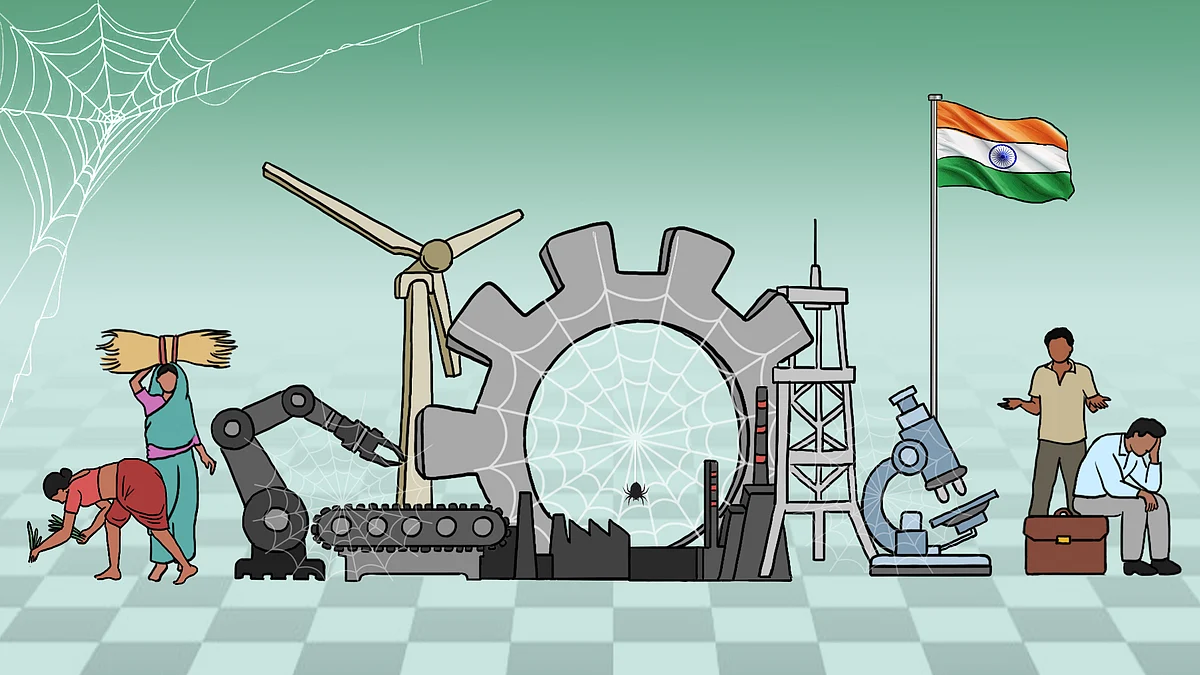Summary
As the youth dividend peaks and inequality deepens, Vivek Kaul asks if we can still revive the optimism of the early 2000s before the window shuts.
Source: newslaundry.com

AI News Q&A (Free Content)
Q1: How has India's economy evolved since the liberalization in the early 1990s?
A1: Since the liberalization in the early 1990s, India's economy has transformed significantly. The country adopted a broad economic liberalization which led to increased foreign investment and privatization. GDP growth rates improved, and sectors like finance, banking, and technology expanded rapidly. However, income inequality and unemployment remain persistent challenges. The service sector now contributes over 50% to the GDP, demonstrating a shift from agriculture to more industrial and service-oriented economic activities.
Q2: What are the key factors contributing to income inequality in India?
A2: Income inequality in India is driven by several factors, including rapid urbanization, uneven distribution of resources, and disparities in education and healthcare access. The rise of the 'Billionaire Raj' has further widened the gap between the rich and the poor, with wealth being concentrated among a few. Despite efforts to promote inclusive growth, structural economic issues and regional disparities continue to exacerbate inequality.
Q3: What role does urbanization play in India's economic development and inequality?
A3: Urbanization in India has been a double-edged sword. While it has contributed to economic growth and improved human development indicators, it has also led to increased income inequality. Cities have become centers of economic activity, attracting rural migrants, but the benefits are not evenly distributed. The rapid urban expansion often leaves behind significant portions of the population who do not gain from the economic opportunities, perpetuating inequality.
Q4: How does the youth demographic impact India's economic prospects?
A4: India's large youth demographic presents both opportunities and challenges. A young workforce drives economic growth through increased consumption and innovation. However, without adequate skills development and employment opportunities, this can become a demographic liability. Current trends show that only 20% of the workforce is skilled, which is significantly lower than global averages, highlighting the need for urgent reforms in education and vocational training.
Q5: What strategies could revive India's economic growth and reduce inequality?
A5: To revive economic growth and reduce inequality, India needs to focus on structural reforms such as improving education and healthcare access, enhancing skill development, and fostering an inclusive growth model. Policies that encourage entrepreneurship and innovation, along with fiscal management reforms, are crucial. Additionally, addressing regional disparities and ensuring equitable opportunities across urban and rural areas can help bridge the inequality gap.
Q6: How does India's current GDP growth compare with global standards?
A6: India continues to be one of the fastest-growing major economies globally, despite recent slowdowns. Its GDP growth is projected to average around 6.5% in the coming years. This rate is competitive, especially as other major economies, such as China, face slowing growth. India's economic strategy focuses on leveraging its large population, potential markets, and favorable geopolitical conditions to maintain its growth trajectory.
Q7: What are the implications of India's demographic dividend on global investments?
A7: India's demographic dividend translates into a vast consumer base, making it an attractive destination for global investments. The young population is inclined towards spending on technology, education, and goods, driving demand. However, to fully capitalize on this demographic advantage, India must address its skills deficit and create conducive environments for investment through policy reforms and improved infrastructure.





